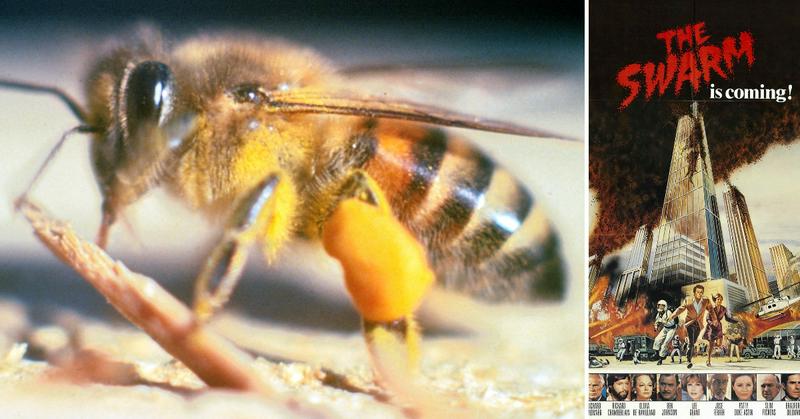The 'Killer Bees' Scare Of The '70s: Was There A Real Threat?
By | July 3, 2018

The killer bees are coming! That's what we heard over and over in the '70s, thanks to the killer bee scare that became a media sensation. Fear about an invasion of killer bees stoked schoolyard debates and inspired disaster movies. And that's saying something, because there were plenty of real things to be concerned about in the '70s; reports of Vietnam war protests, government cover-ups, hijackings, the gas shortage and bra-burners at equality rallies. The terrifying newspaper articles about killer bees and the threat they posed to people and the environment were downright scary in their descriptions of how the killer bee hybrids were on the verge of invading the United States and how they formed massive and vicious swarms that attacked and killed anything in its path. Whatever happened to the swarms of killer bees that threatened the people of the seventies? Was there even a real threat from these insects or was it a case of sensationalized news reporting or even a hoax, like the Bigfoot craze?
Yes, There Was A Hybridization Of Bees

All the news reports of the time explained that honey bees from Africa were taken to Brazil in the 1950s and a hybridization program was started. The goal was to create a more efficient honey producer, but, according to the news reports, something went horribly wrong. Instead of preserving the desired traits in the bees, the hybrids acquired the supposed aggression of the African bees only on steroids, resulting in angry, aggressive, killer bees. The reports further added that the swarms of killer bees escaped the lab and were on the move…specifically north to the United States. It was just a matter of time, the newspapers claimed until the killer bees were at our doorsteps.
No, The Africanized Honey Bees Were Not Killers

The reality was that Africanized honey bees did, and still do, exist. But, individually, the bees are no more dangerous than regular honey bees. The only difference is that, when a threat is detected, only about ten percent of the regular honey bees attack. With Africanized honey bees, the whole hive swarms to attack. Fortunately, though, the Africanized honey bees have a pretty high threat trigger so they don’t routinely form massive swarms and go on killing sprees.
The U.S. Invasion Slowed in the South

Many of the news articles of the time included a map showing how the hybrid killer bees would sweep through Mexico and invade the United States. The truth is, the bees did enter the U.S. So why don’t we hear new reports of towns being threatened by the killer bees? Because, first, they aren’t nearly as aggressive as the media made them out to be, and second, because they began breeding with the indigenous honey bees of the South … and these bees are much calmer and peace-loving insects. The interbreeding apparently subdued the angry trait in the Africanized bees, resulting in another hybrid bee, but one that is much more chill.
Killer Bees Were A Popular Subject for Film And TV

The media hoopla surrounding killer bees fuel Hollywood to capitalize on the potential threat. In 1974, there was a made-for-TV movie called “Killer Bees”, starring Gloria Swanson, that aired as ABC’s Movie of the Week. A few years later, in 1978, the disaster action movie, The Swarm hit the big screen, starring Michael Caine. In between, there was a reoccurring skit on Saturday Night Live called “Killer Bees.”
The pop culture references to killer bees, along with news reports, just cemented in the minds of the people of the 1970s that Africanized honey bees posed a real threat to national security.
